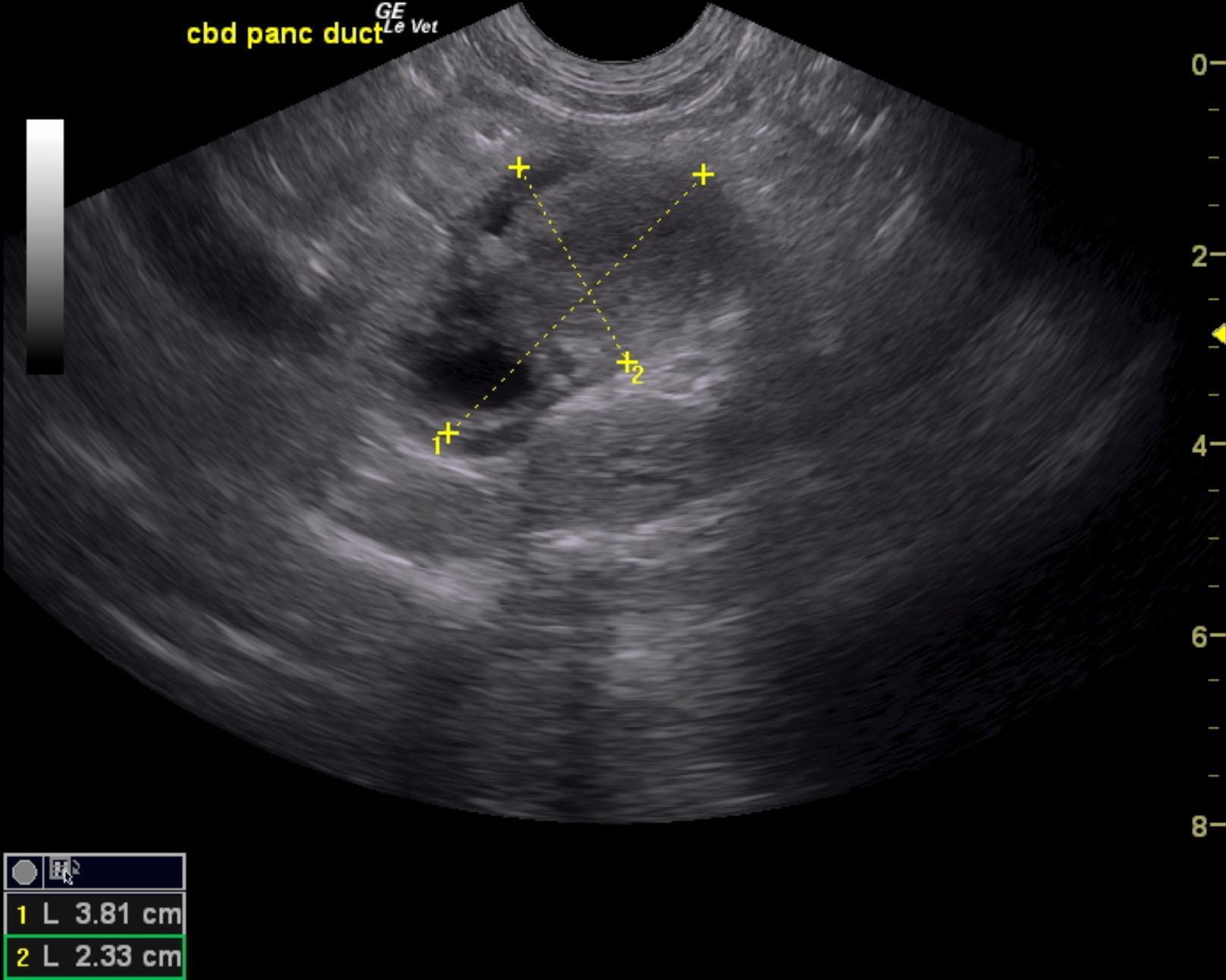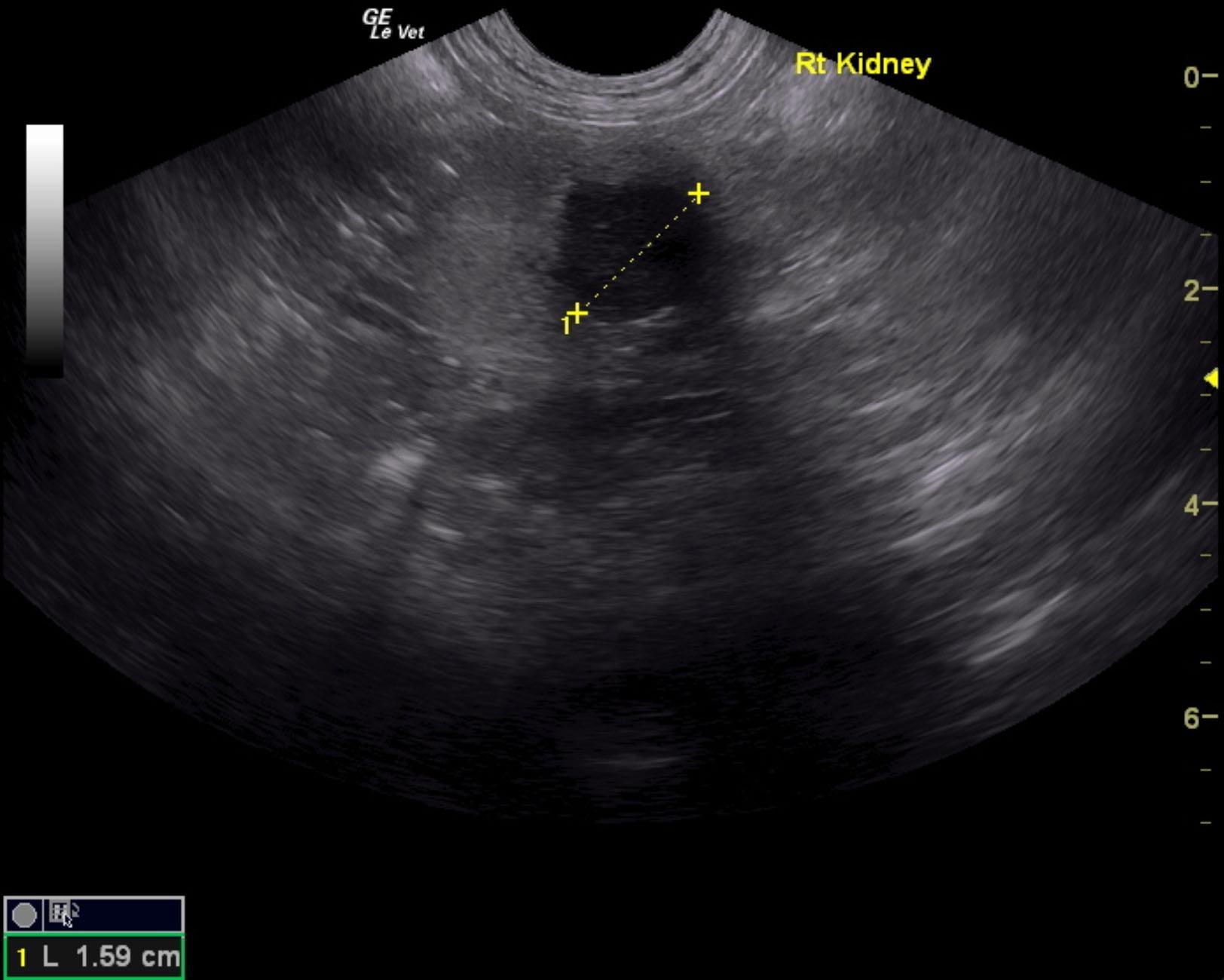A 14-year-old neutered male DSH cat was presented for evaluation of weight loss, anorexia over a 2-week period, icterus, dehydration, a palpable abdominal mass (possibly feces), and severe dental disease. The only abnormality on urinalysis was mild proteinuria. Abnormalities on CBC and serum biochemistry included leukocytosis, neutrophilia, elevated bilirubin, and severely elevated liver enzyme activity (AST 105, ALT 352, ALP 1112).

